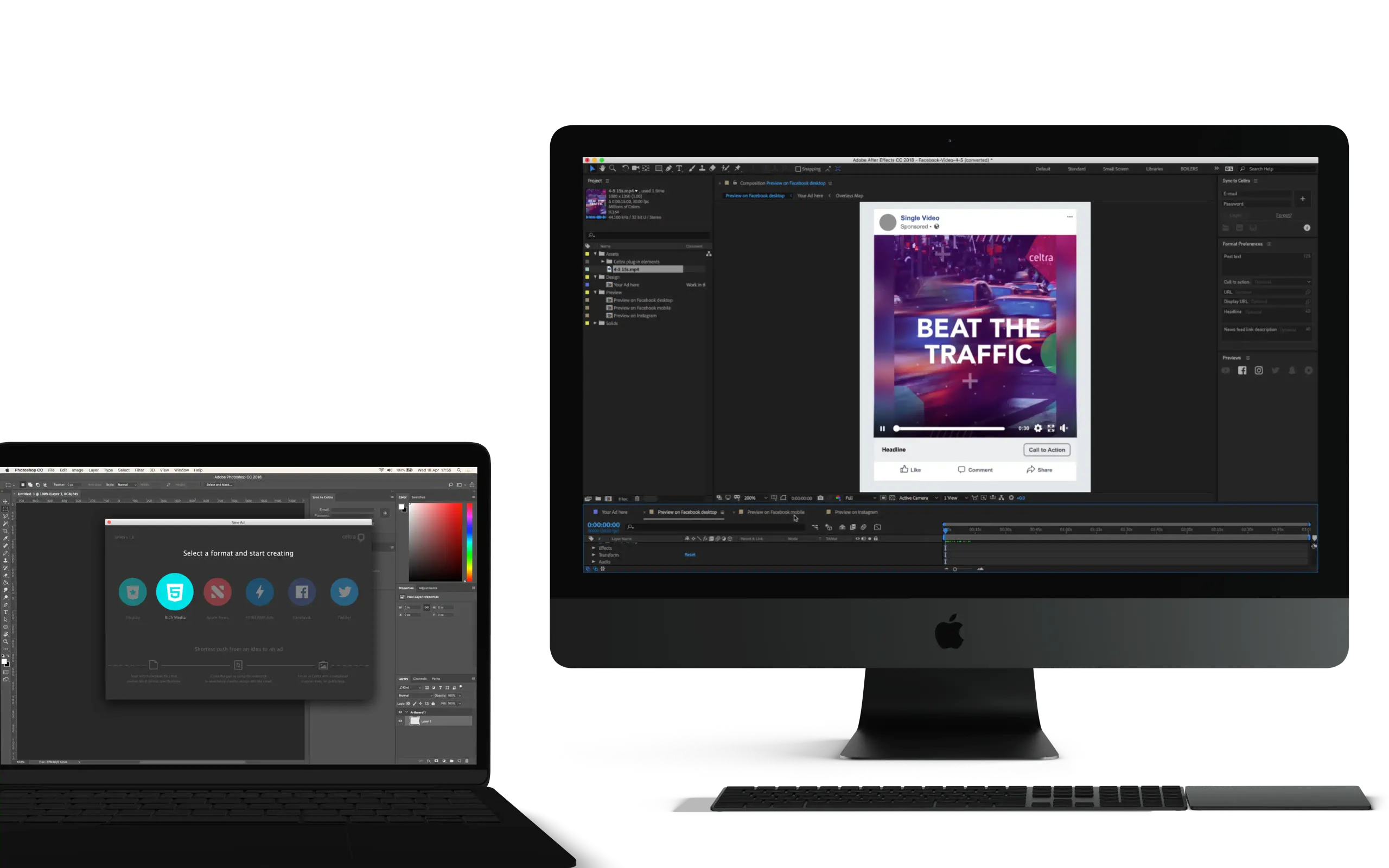
Celtra Ps & Ae Add-ons
Context
Company: Celtra
Timeframe: 2018
Role: VP of Product
Every quarter, Celtra’s team analyzed ads running on our platform and published reports. Our findings consistently revealed that:
- The best-performing ads are optimized for each ad format and use interactive features to engage the user into brand narrative.
- Only a small segment of all ads on our platform was aligned with best practices; the long tail were uninspiring animated GIF banners and 30s TV ads using the creative platform mostly as an Ad Ops wrapper for ad trafficking.
Meanwhile, everyone in the industry was grappling with declining campaign performance. Until the subsequent rise of social media platforms disrupted the entire digital display advertising business.
Mission
By common sense, if customers’ ads are not performing well, it’s only a matter of time before they start questioning the value of their creative platform.
If we could help them consistently deliver better ad performance by improving production quality, that wouldn’t just mitigate churn risk, it would also be a major selling point. Based on this rationale, I instigated an R&D initiative to determine:
- Why customers aren’t putting the platform’s creative capabilities to better use despite being aware of the correlation between the quality of ads and performance.
- Find solutions for raising the bottom line of quality.
- Explore how our core product could deliver value for social media ads we were starting to support.
Contributions
I led a cross-functional team through product discovery, MVP development, and alpha testing. Key individual contributions:
- Identified production bottlenecks by mapping and dissecting campaign lifecycle.
- Conducted data analysis of customers’ production workload to validate hypotheses about resource constraints.
- Interviewed customers to gain deeper understanding, validate our emerging product ideas, and secure beta testers.
- Wrote product strategy and pitched it to the executive team to secure development resources.
- Designed the Adobe to Celtra integration system.
- Designed the responsive video feature for automating adaptations for multiple aspect ratios.
- Designed the creative “safe guides” feature for simulating video player and other ad UI overlays.
- Hired and managed external development partners specialized in Adobe add-ons development.
Results
- Reduced production time from hours to minutes.
- Secured commitment from target customers before development.
Highlights
Quantitative research
We analyzed platform usage based on the following metrics to gauge customers’ workload:
- Median number of campaigns published (per account per month);
- Median volume of ads published (per account per month);
- Median number of users with designer permissions (per account per month);
- Median number of ads designed (per user per month);
- Median production duration (from ad creation to publish date).
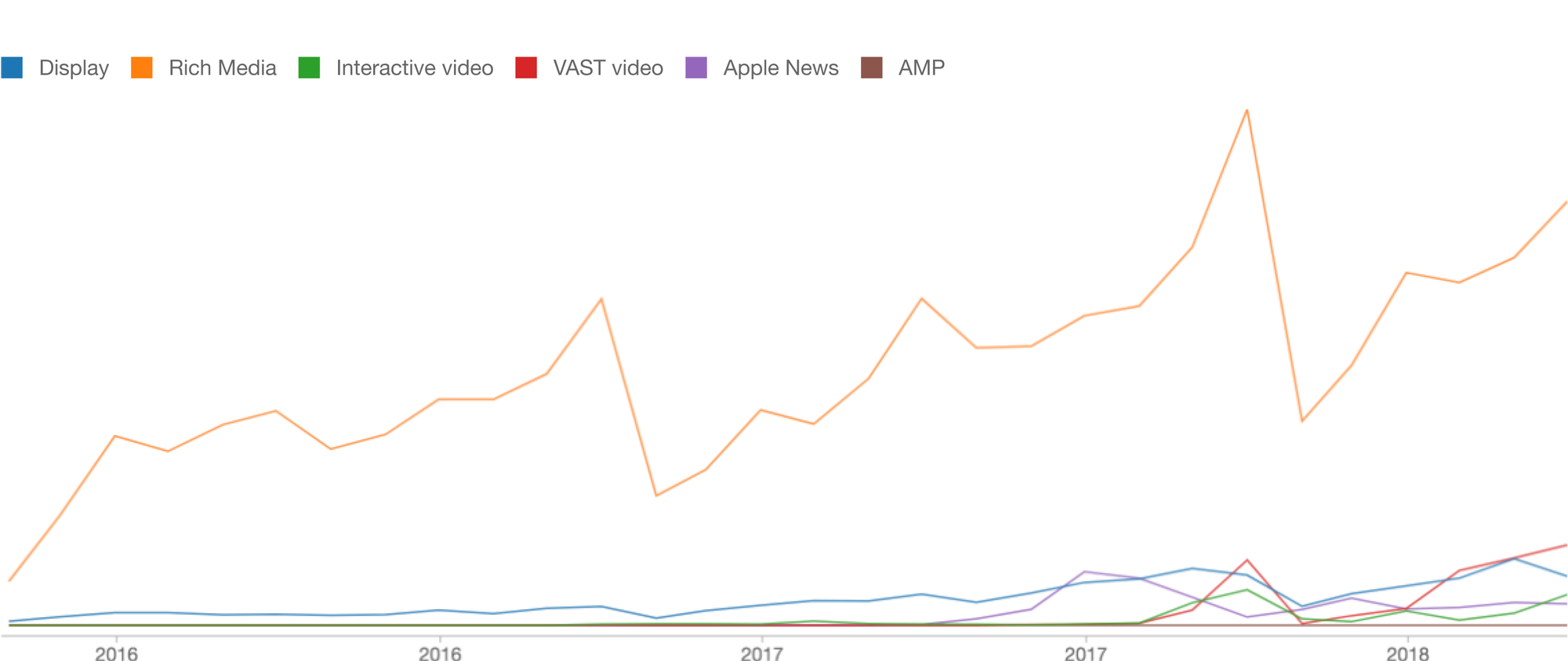
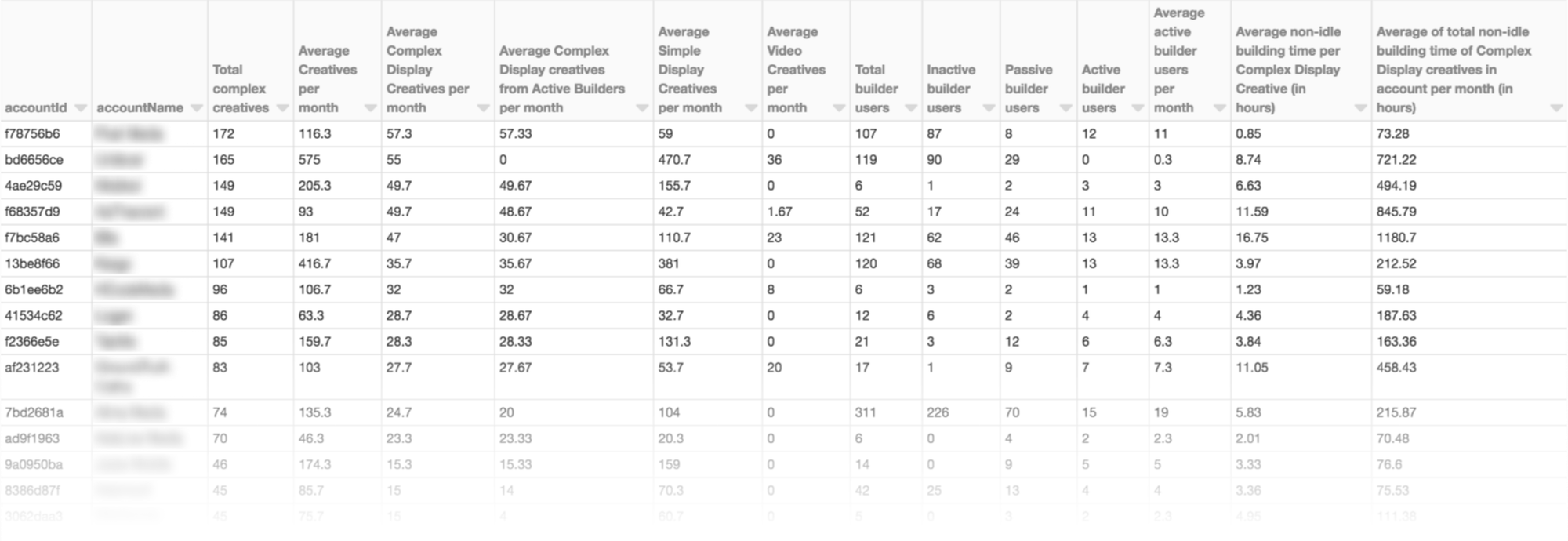
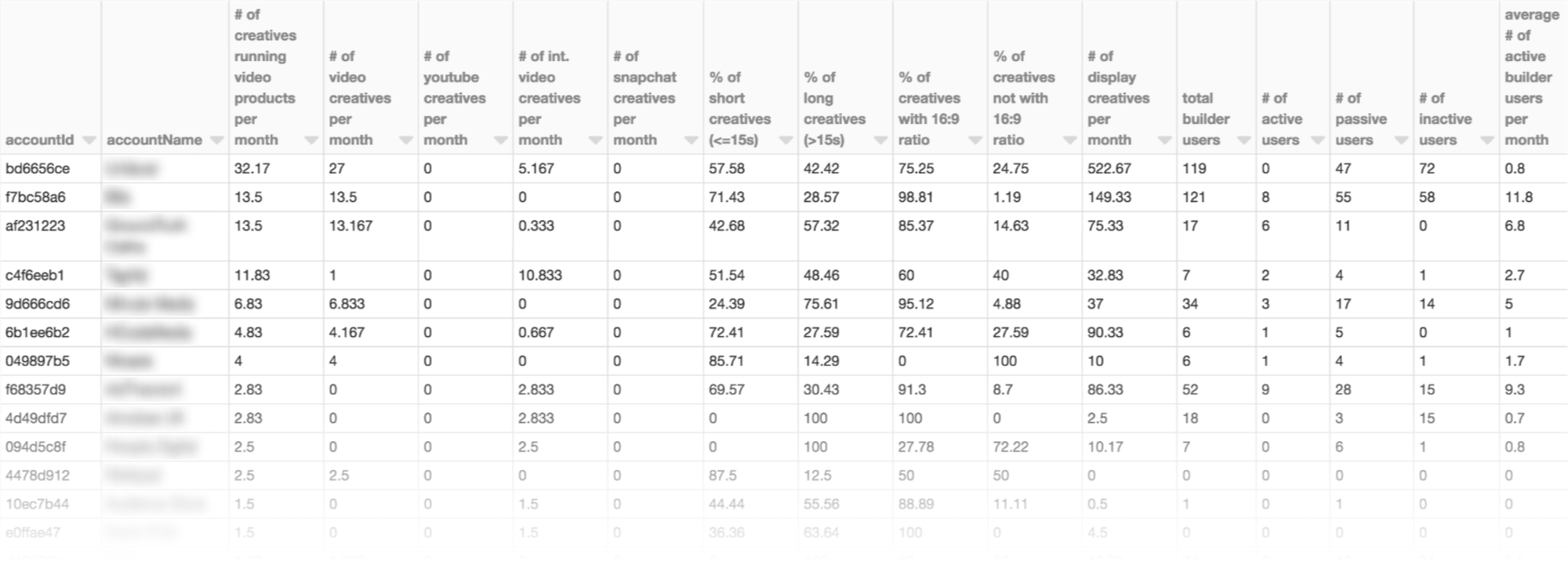
We found that the majority had smaller design teams but produced a competitive volume of work compared to those with bigger teams. These findings gave us confidence in our hypothesis, validated the opportunity, and identified target users.
Customer interviews
Tight deadlines. Over 90% of advertising revenue lies in buying access to audiences, and the value of premium ad placements is very time-sensitive. That’s why most of the campaign lifecycle revolves around the media buy, and creative production is just a means to that end. Whatever little time is planned for it ends up even shorter due to frequent changes and ineffective coordination via spreadsheets and emails. Publisher in-house creative teams tend to be risk averse and adopt the path of least resistance to avoid revenue losses and blame that comes with missed launch deadlines. Creative agencies worry about TV ads, not banners.
Fragmentation of ad formats. In addition to the standard IAB formats, there’s also a plethora of publisher- and market-specific ones. There are just too many specifications to memorize (dimensions, durations, encoding, max. file sizes, etc.). Finding accurate information online can be challenging, and creatives are often blocked by waiting for answers from people up the chain of command.
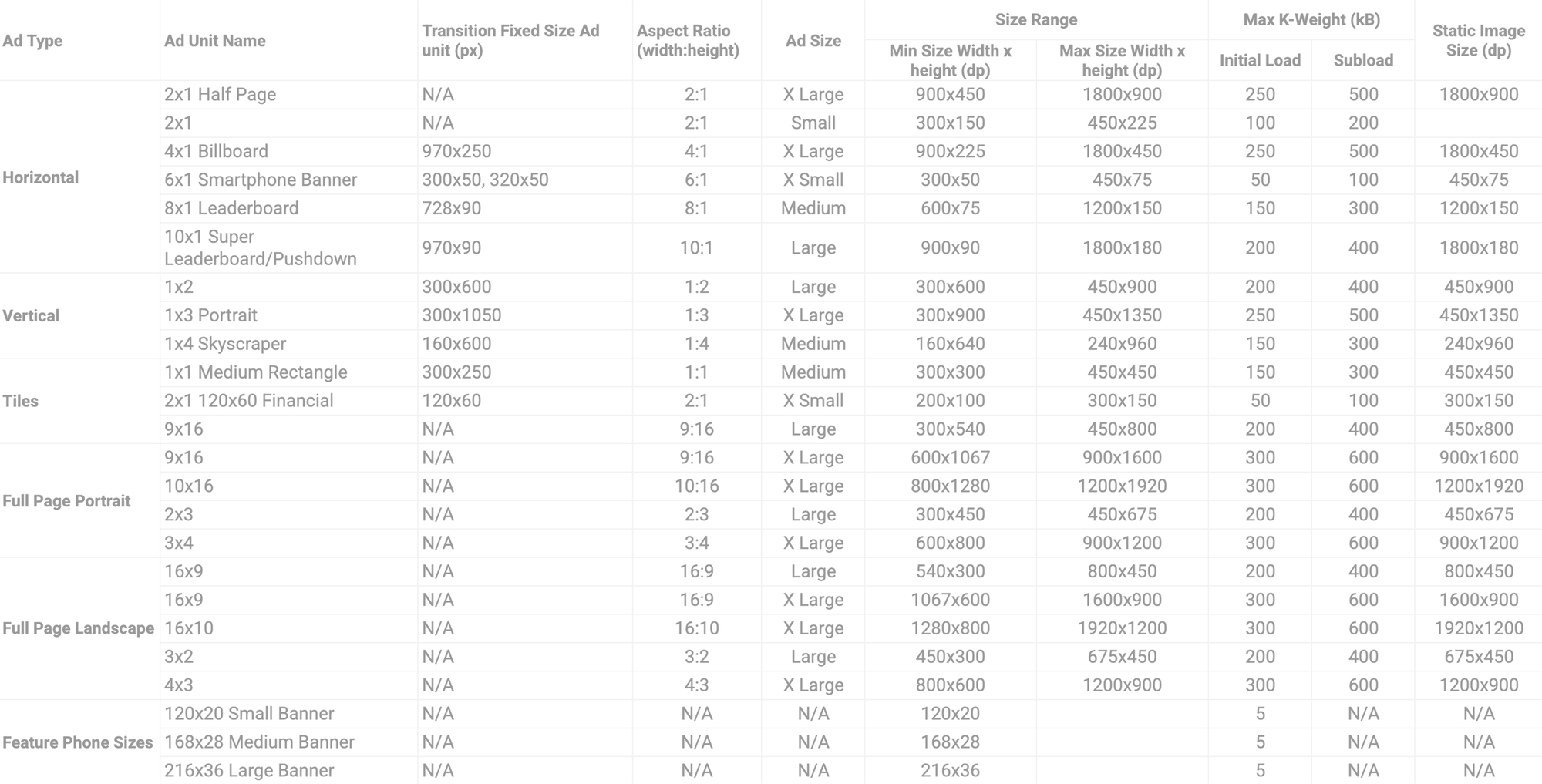
Most weren’t aware of Celtra’s existing Ps add-on. Those that were, complained about it imposing a workflow incompatible with theirs.
Validated demand. After the interview, we pitched them our idea for an integrated workflow from Adobe Ps and Ae to Celtra. All of them committed to participating in a beta release program on the spot. In the following weeks, our Customer Success team informed other clients about the project during QBRs, and we got more inbound requests for beta testing.
Product strategy
We mapped out the creative production process, approximated time spent on each stage, and explored possibilities for automating or shortening superfluous steps from the workflow.
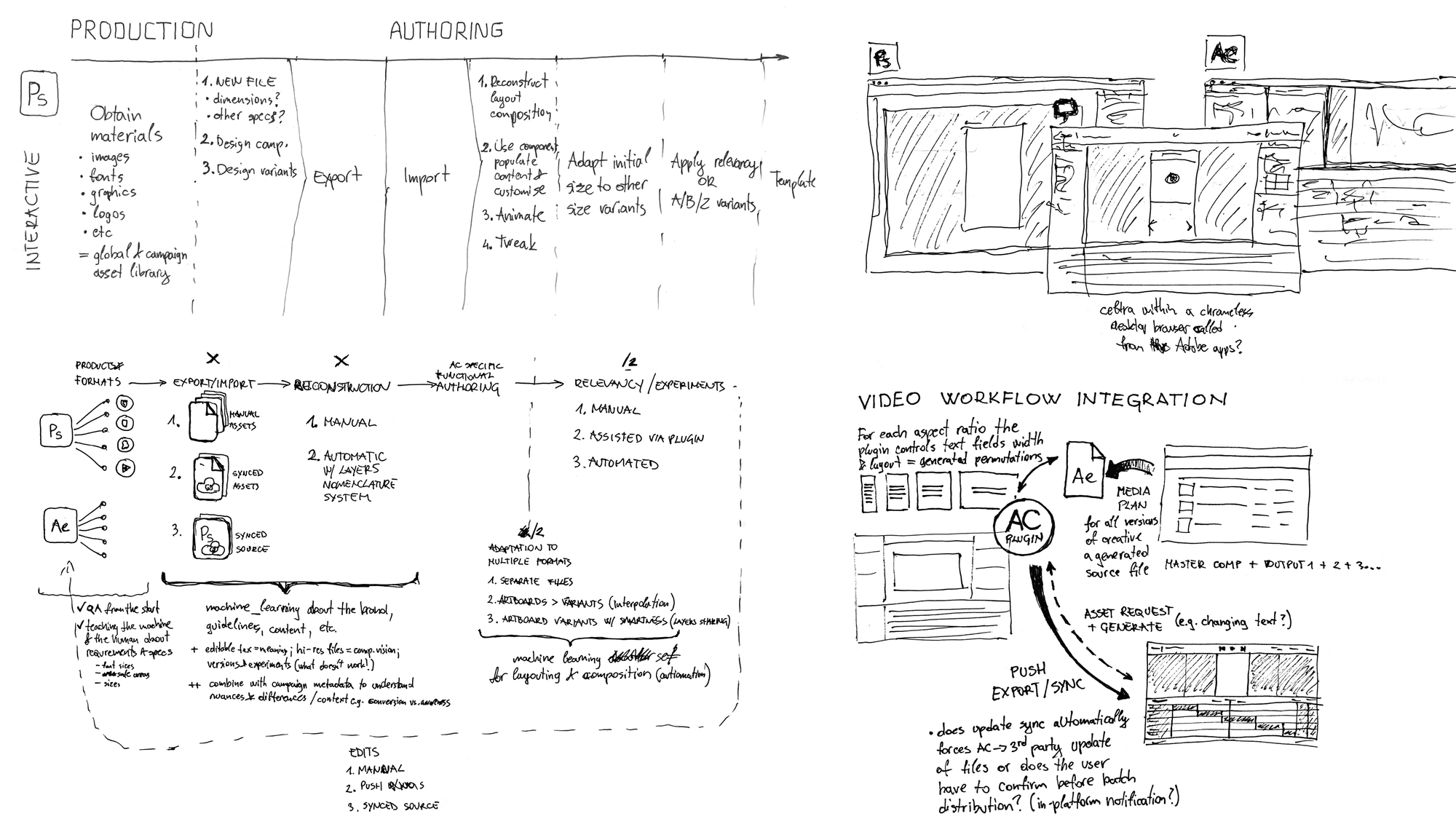
Seamless hand-off
The core of the project was to automate the handoff from Adobe Ps and Ae into Celtra. Exporting layers to files was the easy part. The real value lay in reconstructing the entire composition, which users were currently doing manually for each ad format.
User interviews also exposed several other requirements we would have to solve: support for editable text layers and web fonts, support for the @2x retina standard, advanced manual controls, and exporting the same layer only once for all formats in the highest resolution (which would be downsampled and compressed on the server).
Missing format specifications
The easy way out would have been to produce content for our support website and hope users would find it. It could potentially generate new customer leads via web search, but had a high risk of failure. If we wanted a bulletproof solution, we would have to somehow integrate ad specifications into Ps and Ae. Like New File dialogue presets, but for ads.
The only way we could update preset files in the future was by implementing a custom wizard.
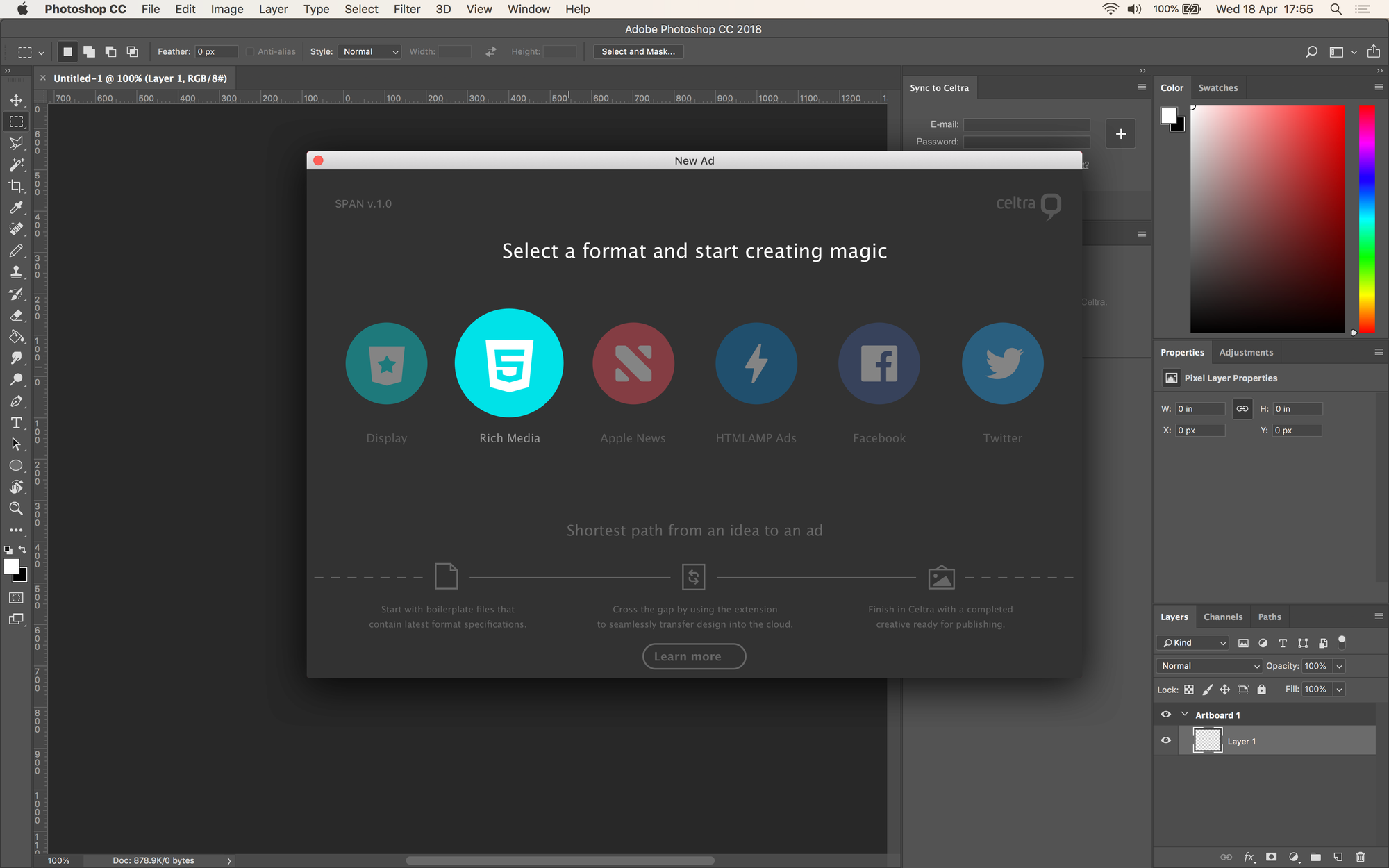
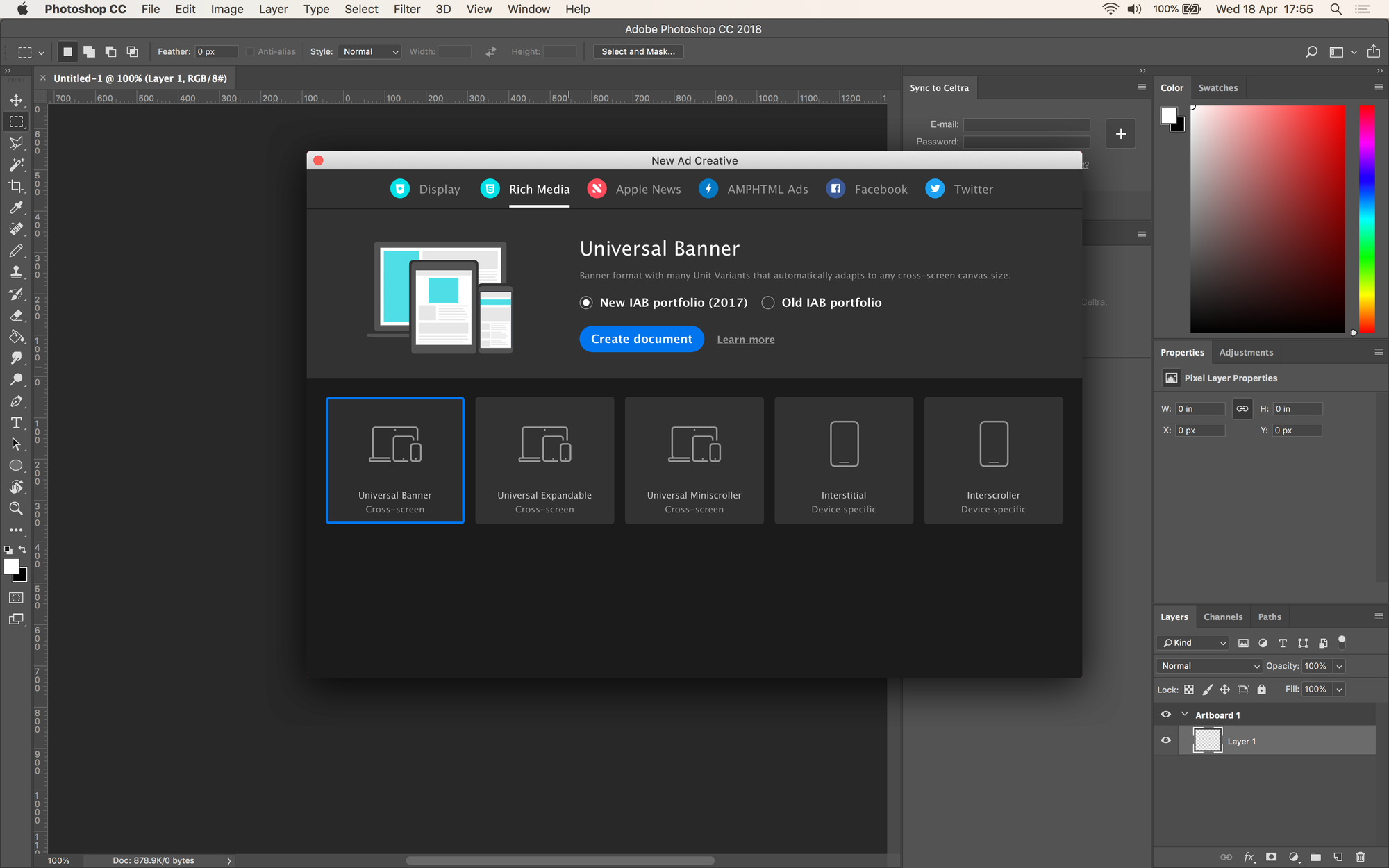
Architecture & integration mapping
Video formats were straightforward, but to support the entire lineup of display ad formats, we needed a system for binding multiple ad sizes and optional expandable units.
If we implemented it so that each format was a standalone Ps file, the only way we could bind them into one Celtra creative was to enforce a strict file-naming convention for specifying logic. That would be a serious point of failure due to a steep learning curve, clashing with user-preferred naming conventions, and unbinding problems in case of human error.
A much more elegant way was to package multiple creatives into a single Ps file with all available format units mapped as artboards. Their names could be predefined without relying on user input. More expensive implementation, but a bulletproof solution. We pushed the entities mapping logic further by mapping Ps’s layer groups to Celtra’s, and explored options for developing a nomenclature system that would convert layers into Celtra’s interactive components (e.g., carousel).
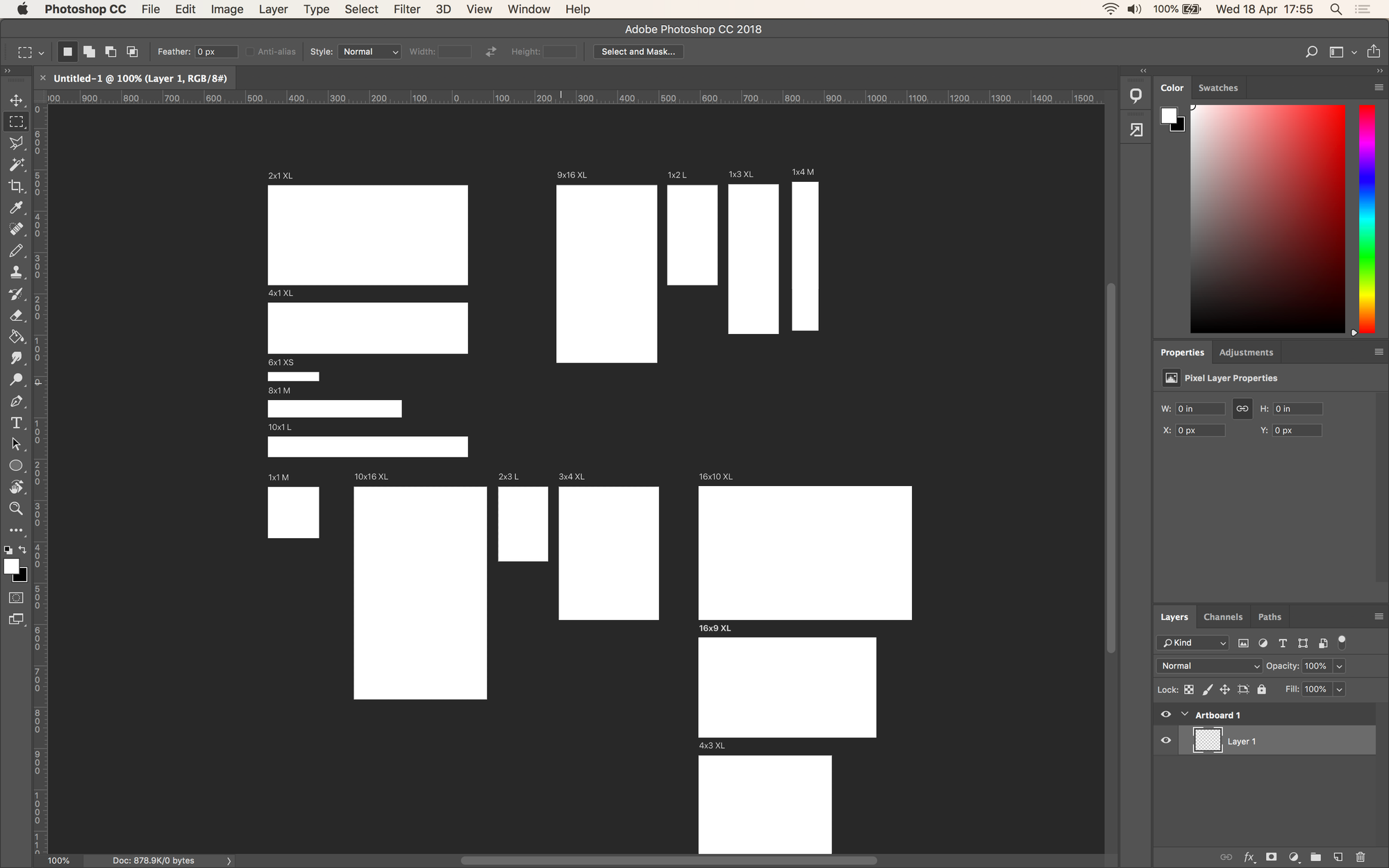
Enabling users to specify Celtra’s destination account and campaign to upload work from add-ons also required extending Celtra’s API and implementing log-in.


Automating adaptation to multiple sizes
For display ads, the Photoshop add-on would convert fixed width/height and x/y pixel values to Celtra’s responsive layout. That way a single ad format input composition could be interpolated into all others. Users could use the same layers on multiple artboards to define different compositions for landscape, portrait, and square aspect-ratios to achieve optimal results.
For video ads, we developed a responsive layout engine for After Effects that reflows the entire composite from any source to any target aspect ratio.
Responsive video engine demo
Creative guides and video player simulation
While we were creating an inventory of format specifications, we noticed that video player controls often obstruct important elements of the creative. There were also significant differences between the desktop and mobile player UIs.
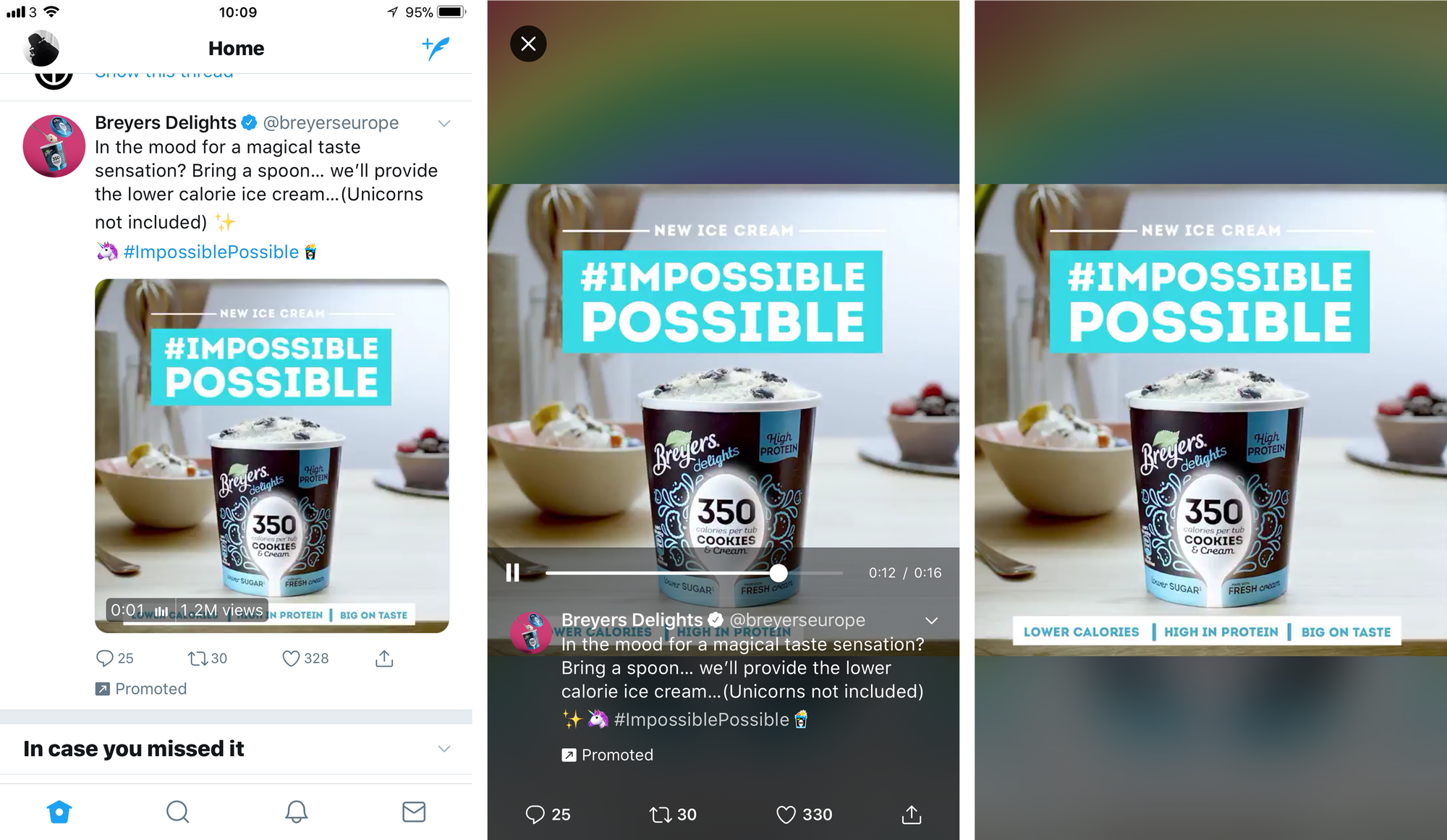
We got the idea of creating “safe area guides” layers (unlike those used in TV production) and player simulation Ae comps which would enable designers to preview and proof that the creative content downscaled gracefully on-the-fly without needing to render and upload to each media platform.
Format safe area guides for Facebook and Instagram demo
Format safe area guides for YouTube demo
Future-proofing for dynamic & generative use-case
We also had to think about how both display and video solutions would power our long-term goals. We were already working on enabling creative automation via external data ingestion and experimenting with ML generation. This required deep legal, integration, and infrastructural research, such as the following proof of concept demonstrating server-side generation of hundreds of variants based on an After Effects creative template and content provided as structured data in Google Sheets.
Data feed powered generative video engine demo
Conclusion
The project struggled with development resources due to higher priority initiatives and was eventually retired.
Credits
Data science: T. Rostan
UX+UI Design: G. Furcolo
Engineering Celtra: P. Bradey, U. Pirnat, G. Kozak, et al.
Engineering Videobolt: M. Stojkovic, U. Stojanovic, I. Halilovic